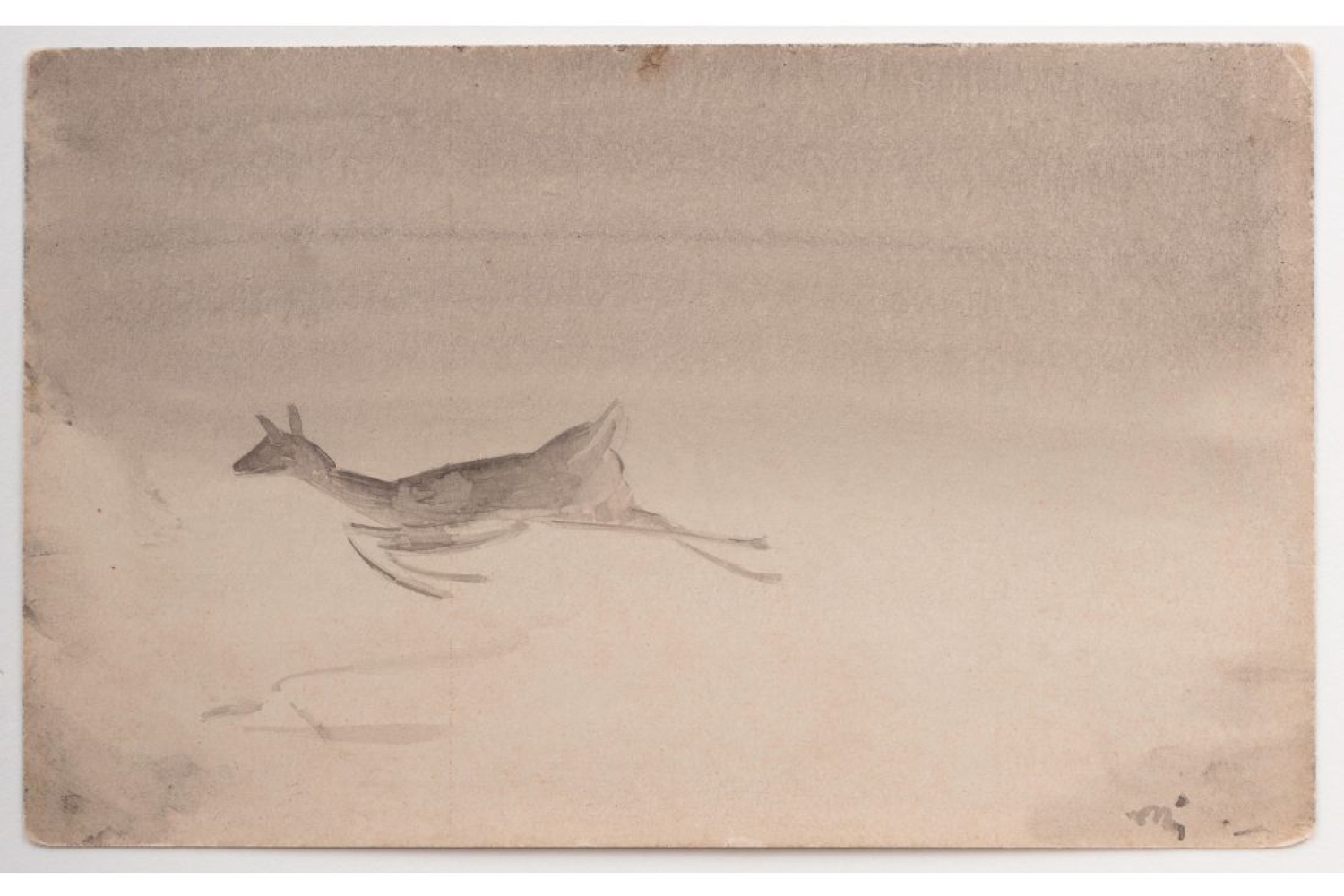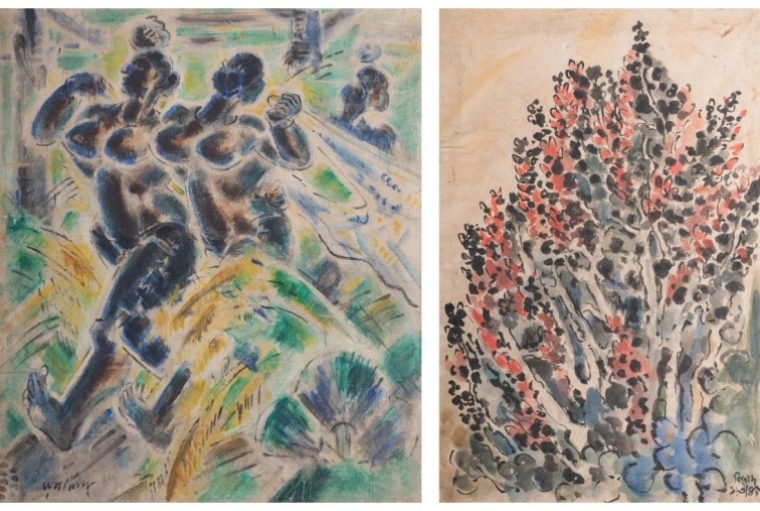
Nandalal Bose

Nandalal Bose
Kiran Nadar Museum of Art is presenting an exhibition that will look back at a slice of the history of art education in the country featuring rarely seen and historically significant pieces from its collection!
Purvaee, the eastern wind, investigates pathways of creative sensibility transmission and modes of visual representation among the first generations of teachers in two pioneering art institutions in the country, through diverse chronological orbiting. The core narrative of this show is derived from the masters' practices, which converse with the artistic practices of subsequent generations. It reflects on the methods of institutional inducement, which allowed their acolytes to develop a wide range of artistic sensitivity. Many of these students have gone on to make important contributions to the field of modern and contemporary art.

Ramkinkar Baij (left) | Benode Behari Mukherjee (right)
Kala Bhavana (Estd.1919) in Santiniketan and the Faculty of Fine Arts (Estd. 1950) in Baroda significantly influenced holistic art approaches in India. Artist-pedagogue Nandalal Bose (1882- 1966), influenced by Gandhian ideas, believed in artisanal production and a close artist-viewer connection to enhance sensitivities and quality. The importance of comprehending and determining subject matter was generated and proliferated from a principled engagement in Santiniketan by Bose. Mentored by Abanindranath Tagore, he carried forward and imparted a stylistic lineage that was a synthesis of references drawn from Ajanta murals, Indian miniatures, to Far-Eastern linear intonations in ink washes.
Bose's belief in empathetic observation that enlivens the inner nature of objects on pictorial surface, a prevision sustained by his proteÌgeÌ, Benode Behari Mukherjee (1904 - 1980) and Ramkinkar Baij (1906- 1980). Such teachings through creative evolution were later found in succeeding generations of artists, including Sankho Chaudhuri (1916 – 2006), KG Subramanyan (1924- 2016), Krishna Reddy (1925 – 2018), Sarbari Roy Choudhury (1933- 2012) and A Ramachandran (1935- 2024) who traversed the country and beyond as educators and practitioners. Selected works constituting stylistic, formalistic, observational, and methodological criteria from their sprawling practices strike a dialogue with the works of their students Mrinalini Mukherjee (1949 – 2015), Pushpamala N. (1956), KP Krishnakumar (1958 -1989), Vasudevan Akkitham (1958), Bhagat Singh (1958) and Manisha Gera Baswani (1967).
The exhibition will display works produced between the 1940s and the 2000s, with one exceptional and renowned work ‘Sati’ a Japanese woodblock print by Nandalal Bose from the early 20th century, which was critically acclaimed. It will explore the instructive and stylistic transformations that are observed in the works of subsequent generations of artists. Exploring subjectivities and singular representations while focusing on a small area dedicated to the practices of these fourteen artists, the exhibition will participate in a conversation that is profound and broad at the same time. It will study representational phrases and the impressions that occur as styles, shapes, and annexations in a non-sequential manner, using the masters' structural drawings as a teaching tool to make connections between similarities and contrasts.
With more than 200 artworks from the museum collection, unfolding its span and richness the exhibition will investigate associations between individual practices, inter-generational creative dialogues, and institutional peculiarities.
Words Platform Desk
Date 13.09.2024